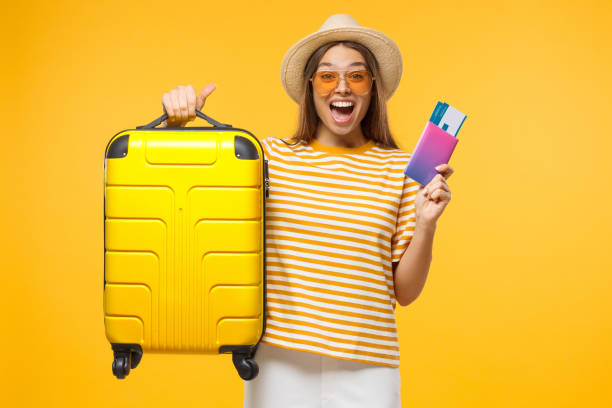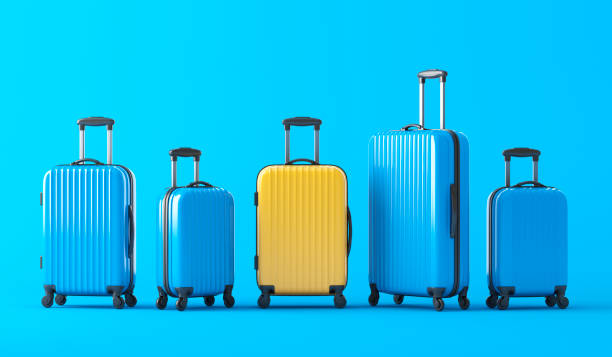Alright, let’s talk luggage. Specifically, hard sided carry on luggage. The kind that makes you feel like a slightly more put-together version of yourself as you roll it through the airport (even though you’re probably wearing sweatpants and balancing a latte on top).
Because here’s the thing: choosing the right suitcase for international travel is weirdly personal. It’s not just about “storage capacity” or “ergonomic handles.” It’s about how that bag fits your travel style. Are you a “pack light, wear black, and pray your bag fits overhead” kind of traveler? Or do you like to bring three pairs of shoes because, hey, you might go salsa dancing in Barcelona?
Let’s dig in.
Why Hard Sided Carry On Luggage Is Worth It
Soft luggage has its charm—it squishes, it bends—but when you’re hopping across time zones and tossing your bag in overhead bins or onto crowded airport shuttles, a hard shell just feels safer.
The best part? Protection. You could probably drop a hard sided carry on off a baggage carousel and your laptop would still be fine (don’t test that, but you get the point). It’s like traveling with a mini vault for your stuff.
Plus, they just look good. There’s something about that sleek shell—especially if it’s aluminum frame luggage—that screams “I’ve got my life together.” Even if you absolutely don’t.
Polycarbonate, ABS, or Aluminum? (The Great Shell Debate)
Here’s where it gets a little nerdy. But stay with me—it matters.
Polycarbonate is the middle ground. It’s flexible, durable, and can take a beating without cracking. Think of it as the “smart choice” friend who always remembers to charge their phone before a flight.
ABS plastic is cheaper, lighter, but… a bit fragile. If you travel once or twice a year and don’t want to break the bank, it’s fine. But if you’re constantly tossing your luggage into the overhead bin while jet-lagged and caffeinated, you’ll want something sturdier.
Aluminum frame luggage—ah, the luxury option. It’s the tank of the luggage world. Solid, sleek, often with those shiny silver corners that make you feel like a 1960s movie star running to catch a flight. It’s heavier, sure, but it can handle years of rough handling and still look good.
I’ve had an aluminum carry on for years, and every little dent tells a story. Rome curb? Dent. Tokyo escalator mishap? Another dent. It’s like a scrapbook, but shinier.
Spinner Wheels, Baby
If you’ve ever dragged a two-wheeled suitcase through a crowded terminal, you know the pain. The tilted lean, the shoulder strain. Ugh.
Get yourself a four-wheeled spinner. Preferably with sturdy, 360-degree wheels that glide like butter across airport floors. You’ll thank yourself at 2 a.m. when you’re sprinting through Frankfurt trying to make a connection.
A good spinner setup makes a hard sided carry on luggage feel almost weightless. And honestly, that’s half the battle when you’re trying to look cool while boarding economy.

The Zipper vs. Frame Dilemma
Zippers are fine. They do their job. But here’s my hot take: once you’ve used aluminum frame luggage with those satisfying latches instead of zippers, it’s hard to go back.
Why? Zippers can snag. They can break. They can, in rare and deeply tragic moments, burst open mid-trip. (If you’ve ever watched your underwear make a public appearance on an airport floor… solidarity.)
Frame cases snap shut with this satisfying “click” that just feels secure. Plus, some of them even come with built-in TSA locks. Translation: you can nap during your layover knowing your snacks and souvenirs are safe.
Inside Counts Too (Organization is Underrated)
Ever opened your suitcase after a long flight and found your toiletries doing the cha-cha with your shoes? Yeah.
Look for a carry on with dividers or compression straps inside. Some have zippered compartments on both sides—one for clothes, one for “everything else.” It makes packing (and repacking after a security check) way less painful.
And if you’re the kind of person who overpacks “just in case” (hi, me too), compression straps are a godsend. They squish everything down and make you feel like a pro-level Tetris player.
Size Matters (But Airlines Don’t Agree on What That Means)
Here’s where it gets tricky. Every airline seems to have a slightly different idea of what “carry on” means. Some allow 22 inches, others say 21.7 (seriously?).
If you fly internationally a lot, aim for something around 21 inches tall. That size usually works across most major airlines. Anything bigger, and you’re risking the gate agent’s dreaded luggage sizer test.
Pro tip: always check the dimensions including wheels and handles. Manufacturers love to list just the shell size. Sneaky.
The Handle Test
It sounds silly, but extend that handle all the way and give it a wiggle. Does it feel sturdy? Does it rattle like an old shopping cart? You’ll be pushing and pulling that thing through customs, so it better not feel like it’s about to snap off mid-trot.
Bonus points if the handle locks at multiple heights. Not everyone is the same height, and nothing’s worse than hunching over your suitcase for hours.
Final Thoughts (a.k.a. My “Trust Me” Moment)
If you travel more than once a year—invest in a good hard sided carry on luggage. Don’t cheap out. Your back, your clothes, and your peace of mind will thank you.
Aluminum frame luggage? Total win if you love durability and that vintage, jet-set look. If you want lighter but still tough, polycarbonate is your friend.
At the end of the day, your carry on is more than just a bag. It’s your travel buddy. Your mobile closet. The thing that holds your life while you chase adventures.
So yeah—choose wisely. Pick something that makes you feel a little excited every time you zip (or click) it shut.
And if it looks good while you’re wheeling it through the terminal? Even better.
